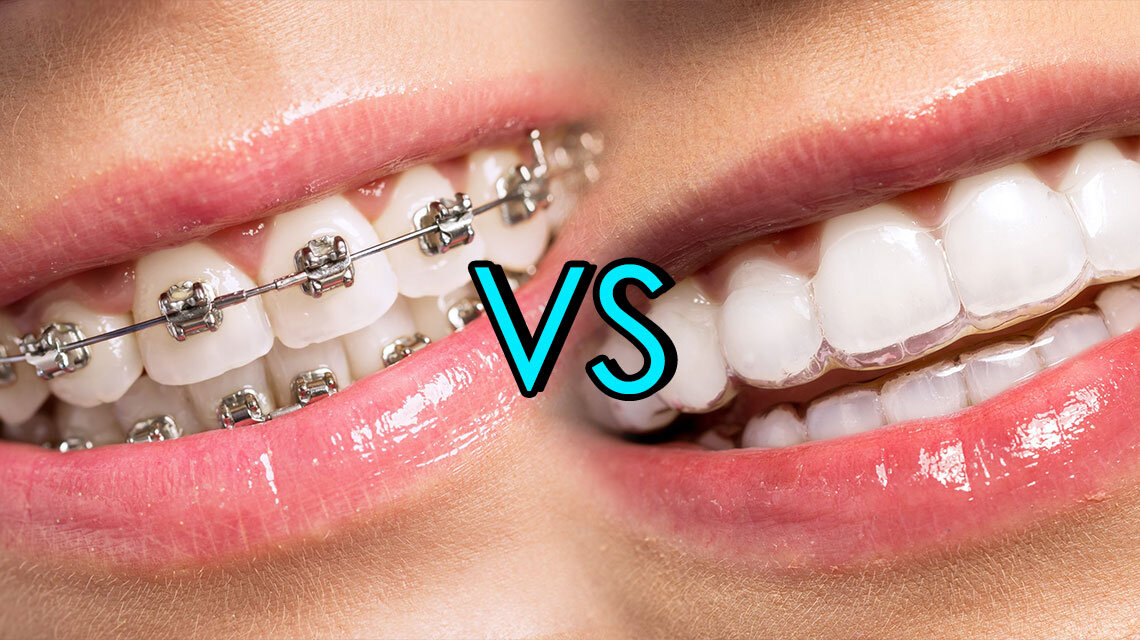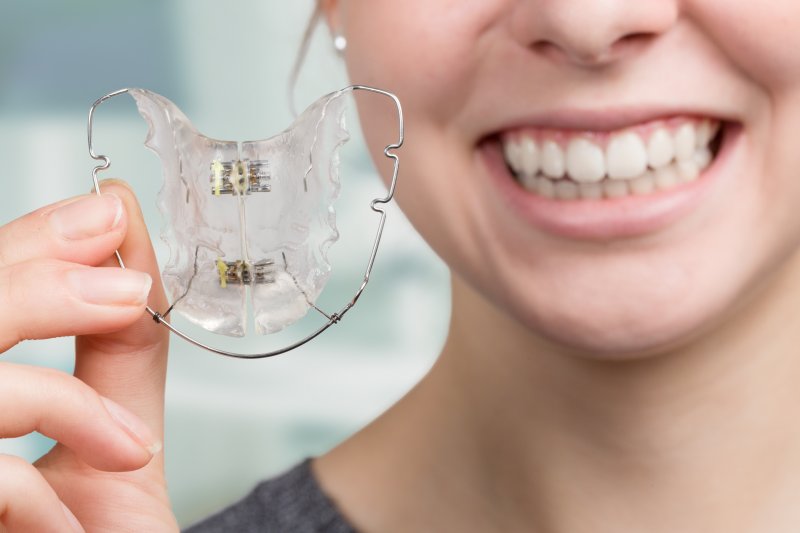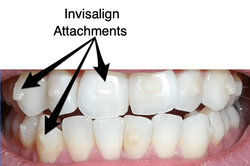How Invisalign Works: Your Overview to Clear Aligners and Their Effectiveness
How Invisalign Works: Your Overview to Clear Aligners and Their Effectiveness
Blog Article
Invisalign vs. Conventional Braces: Which Alternative Is Right for You?
When taking into consideration orthodontic therapy, the selection between Invisalign and traditional braces offers a number of essential variables that warrant careful analysis. Invisalign offers a discreet alternative with detachable aligners, while conventional braces provide an extra noticeable yet reliable service for severe misalignment. Each option incorporates unique advantages and downsides connected to appearances, comfort, treatment period, and price. Comprehending these subtleties is important for making an educated choice that aligns with your personal choices and lifestyle. The inquiry continues to be: which choice will finest fulfill your orthodontic demands and expectations?
Review of Treatment Choices

In contrast, conventional braces include metal brackets and cords that are bound to the teeth. This approach uses continuous stress with time to accomplish alignment. While efficient for complicated orthodontic issues, typical braces call for routine visits for changes and can posture difficulties in keeping dental hygiene because of the problem of cleansing about braces and cords.
Both choices have their benefits, and the choice typically hinges on specific oral problems, way of life choices, and client compliance. Eventually, seeking advice from an orthodontic professional is crucial for establishing one of the most suitable therapy plan customized to private needs. Recognizing the nuances of each choice can substantially affect the total success of orthodontic therapy.
Aesthetic Considerations
A considerable factor influencing the option in between Invisalign and typical dental braces is the aesthetic appeal each therapy supplies. Invisalign aligners are crafted from clear plastic, making them practically unnoticeable when worn.
On the other hand, traditional dental braces consist of steel braces and cables, which can be much more noticeable. While improvements in orthodontic innovation have actually led to the advancement of smaller brackets and colored elastics, typical braces still preserve an even more conspicuous profile. For some people, the visibility of dental braces may discourage them from looking for required therapy.
Eventually, the option between Invisalign and conventional braces might depend upon individual preferences pertaining to aesthetics. Clients who prioritize discretion usually lean toward Invisalign, while those who are less concerned concerning exposure may choose for traditional braces. Comprehending the visual effects of each alternative is critical for making an informed decision that lines up with one's way of life and preferences.
Convenience and Convenience

In terms of convenience, Invisalign aligners are removable, allowing clients to enjoy their favorite foods without limitation and keep optimum oral hygiene. Cleaning and flossing are streamlined, as the aligners can be obtained during these regimens, whereas typical braces call for careful steering around brackets and cords.
Furthermore, Invisalign's progressive system allows for less orthodontic visits. Individuals generally receive numerous sets of aligners at once, which can improve the treatment process and lower time invested in the orthodontist's chair. In contrast, traditional dental braces require routine modifications, making them less practical for those with busy schedules. Invisalign. In general, the comfort and benefit of Invisalign make it an appealing choice for many people seeking orthodontic treatment.
Therapy Period and Effectiveness
While both Invisalign and typical dental braces are effective in correcting oral imbalances, the period of therapy can vary significantly between the 2 options. Normally, Invisalign therapy can take anywhere from 12 to 18 months, depending upon the intricacy of the instance. The clear aligners work by gradually shifting teeth right into their desired placements, and routine follow-ups with an orthodontist assistance ensure development remains on the right track.
On the other hand, traditional dental braces often need a longer commitment, typically varying from 18 months to 3 years. This results from their fixed nature and the usage of braces and cables, which can be more efficient for serious imbalances and complex instances (Invisalign). The therapy effectiveness of traditional dental braces is well-documented, as they permit for precise adjustments and better control over tooth movement
Ultimately, the selection in between Invisalign and conventional braces may rest on both the awaited therapy period and the details oral problems available. Consulting with an orthodontist is essential, as they can give customized referrals based upon private demands, making sure the selected approach aligns with preferred timeframes and results.
Price Contrast and Insurance Choices
Cost plays a significant duty in the decision-making process for people thinking about orthodontic treatment, whether opting for Invisalign or traditional braces. Usually, the price of Invisalign ranges from $3,000 to $8,000, while conventional braces commonly set you back between $2,000 and $6,000. Factors affecting these costs include the complexity of the instance, the duration of treatment, and geographical place.
Insurance protection can dramatically affect out-of-pocket expenses. Many oral insurance strategies supply partial insurance coverage for orthodontic treatments, however the specifics can vary commonly. It is critical for clients to review their insurance coverage to determine the extent of insurance coverage for either alternative. Usually, conventional braces might be extra often covered by insurance policy plans contrasted to Invisalign, which some insurance companies classify as an aesthetic treatment.
In addition, several orthodontic methods provide flexible layaway plan, making both therapy choices extra accessible. Patients must make inquiries regarding prospective pop over to this site funding choices and price cuts for in advance settlements. Examining the overall price, consisting of insurance policy advantages and layaway plan, is important for making an informed decision that aligns with both aesthetic preferences and budget plan factors to consider.

Verdict
In summary, the choice in between Invisalign and traditional braces rests on numerous variables, including visual preferences, convenience, therapy duration, and expense. Invisalign supplies a discreet, removable alternative that promotes dental hygiene and nutritional adaptability, while traditional braces may be preferable for intricate oral issues and typically come with a lower price factor. Ultimately, consultation with an orthodontist is important to evaluate individual situations Check Out Your URL and identify the most appropriate therapy choice for accomplishing ideal dental placement.
When taking into consideration orthodontic treatment, the option in between Invisalign and standard dental braces presents several crucial variables that merit mindful analysis.Comparing Invisalign and conventional braces exposes distinctive treatment alternatives for orthodontic correction.While both Invisalign and conventional braces are reliable in remedying oral imbalances, the duration of treatment can vary significantly between the 2 choices.Price plays a considerable duty in the decision-making process for individuals considering orthodontic treatment, whether deciding for Invisalign or traditional dental braces.In summary, the choice in between Invisalign and standard dental braces hinges on numerous elements, consisting of visual preferences, convenience, therapy duration, and expense.
Report this page